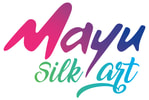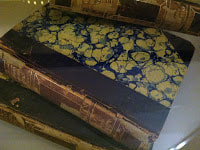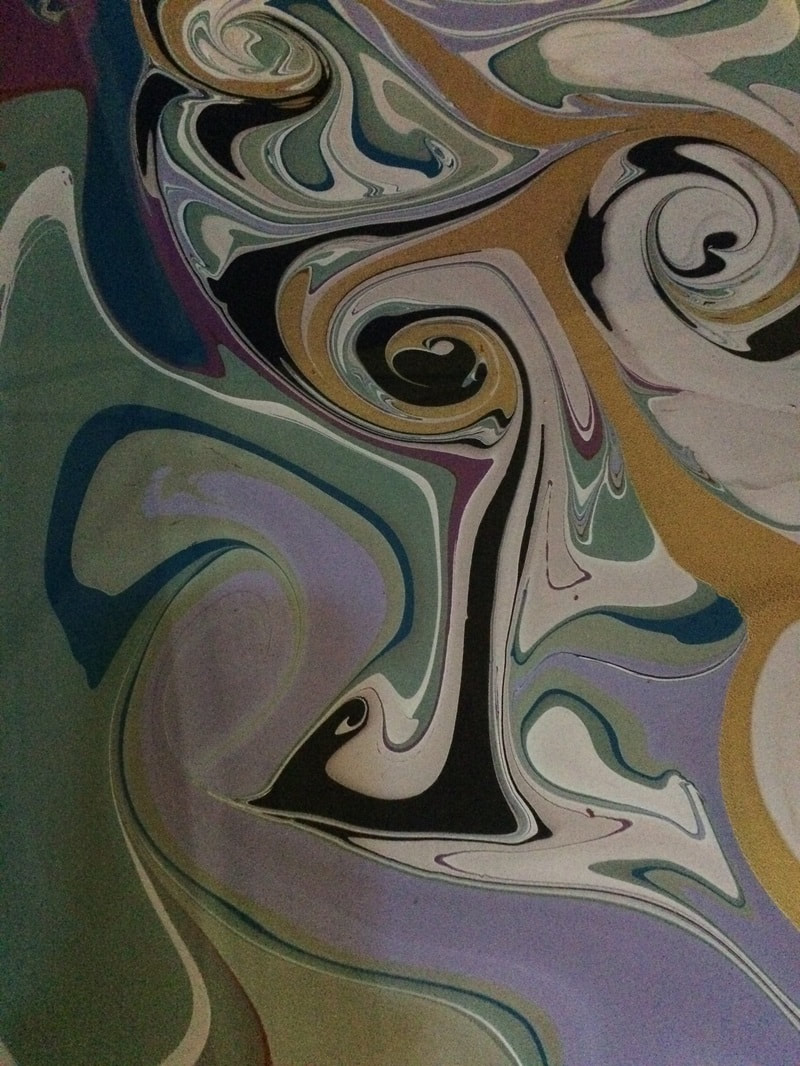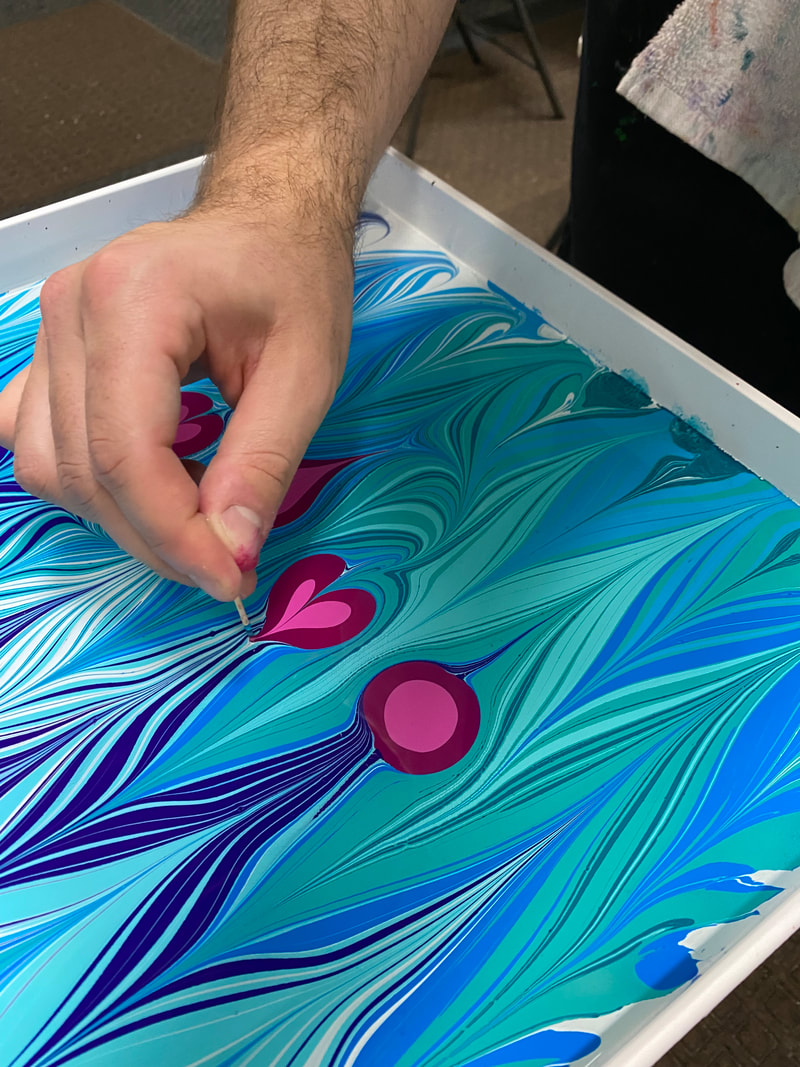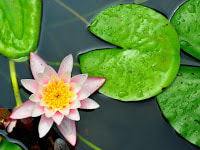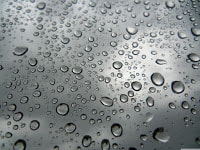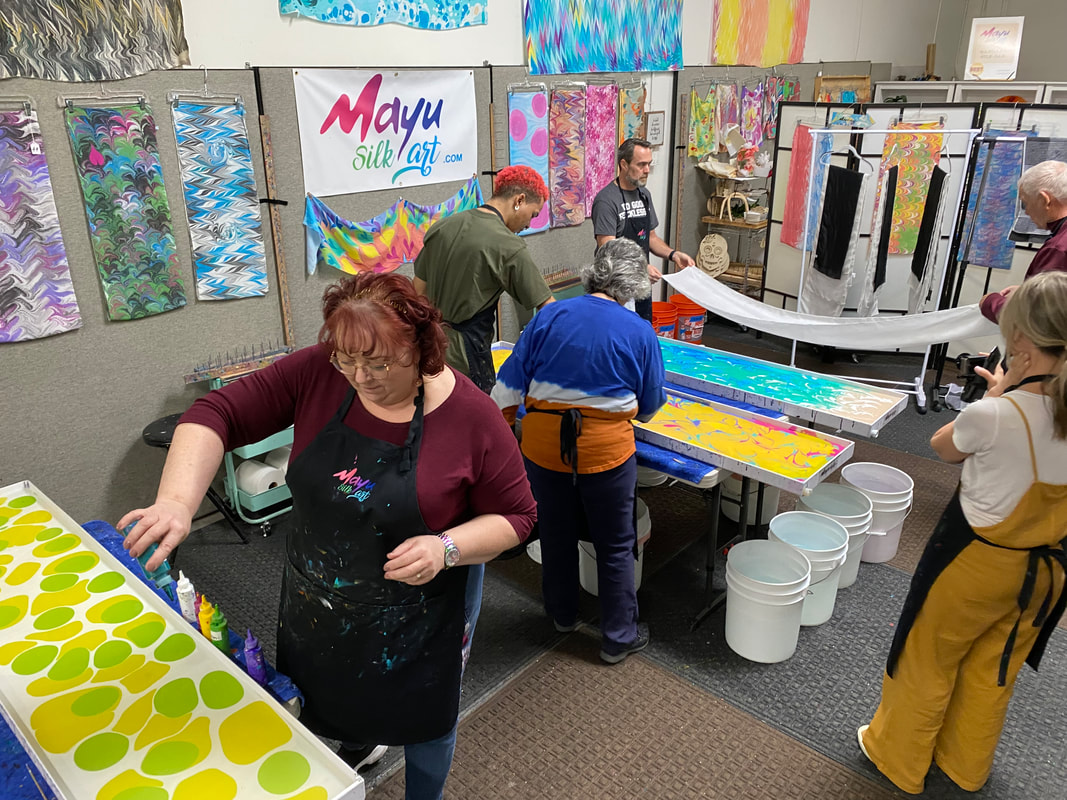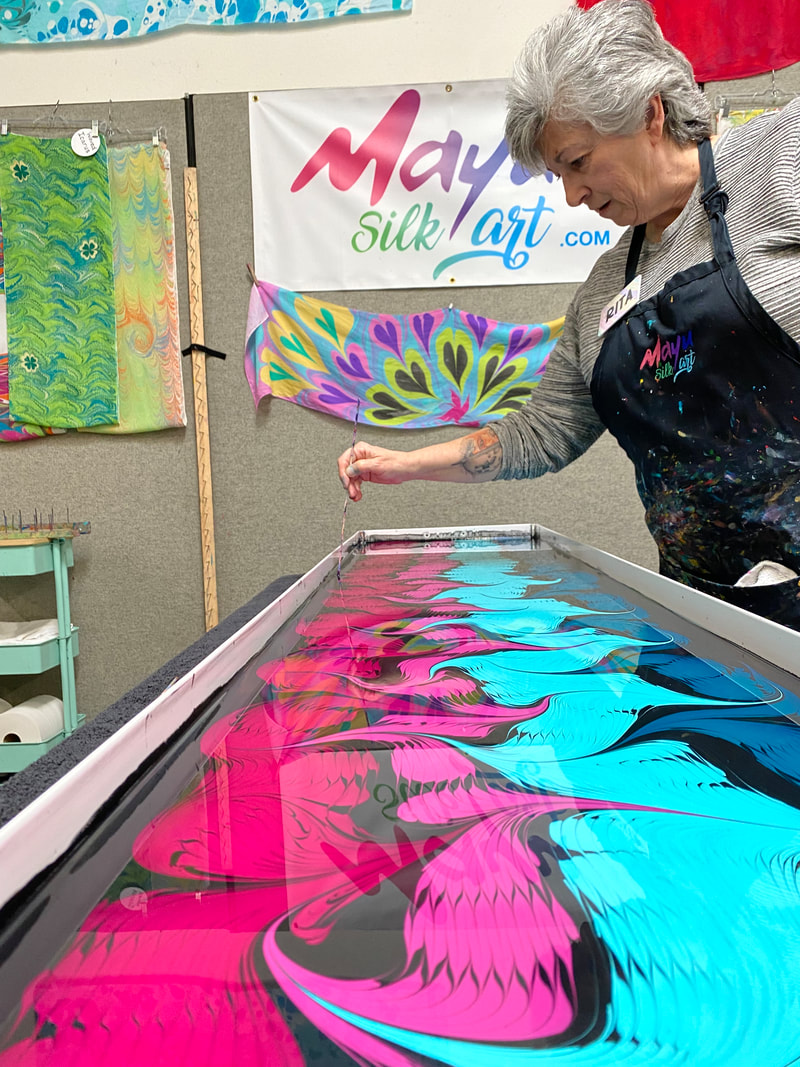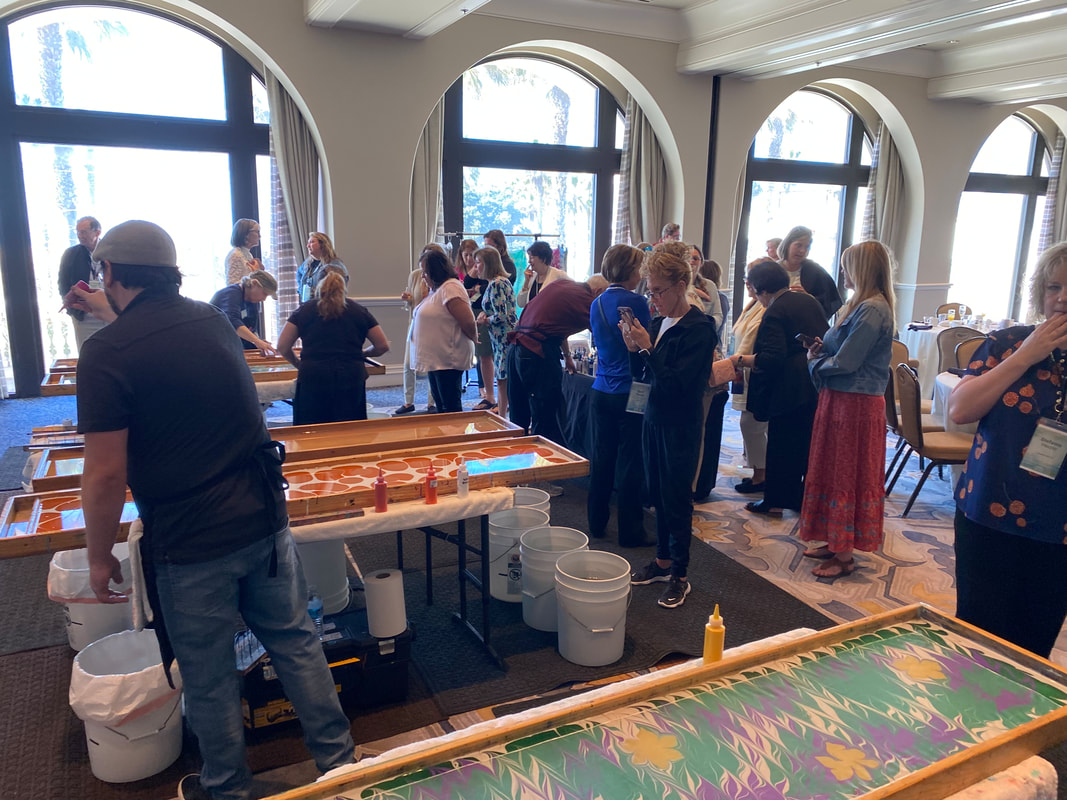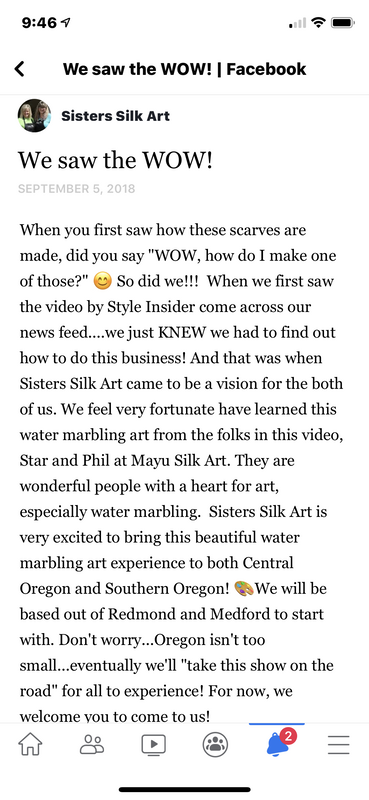|
Essentially, water marbling involved floating a medium on the surface of a liquid- or gel-filled bath to create a design, then transferring the design to paper, fabric or 3D object by dipping it into the bath. For us, specifically, it means using traditional techniques and modern materials to create magical, artful moments and beautiful lasting works of art with others.
Though marbling has been around for nearly 1200 years, it has been shrouded in mystery for much of it's existence. At times enjoying great popular demand, it's processes and techniques were kept secret by the artisans who used them. Indeed, the art form nearly died out around the turn of the 20th century. But with modern materials and technologies available, water marbling has taken on new uses. A Google search of "water marbling" will yield hundreds of YouTube videos on how to water marble your finger nails; a related process called "hydro dipping" combines digital printing and mass production with water marbling concepts to paint everything from tire rims to military helmets. EARLY HISTORY Examples of an art form known as suminagashi, or "ink floating," date back to the 10th century. Suminigashi uses traditional Japanese materials, such as sumi inks and a surfactant made from pine tree resin. It is usually done on rice paper or silk and some researchers believe it was originally used to mark court documents, to prevent forgery or alteration. Another type of marbling, Ebru , Turkish for "cloud art," is believed to have been invented in thirteenth century Turkistan. These marblers used thickened water, which was similar to the marbling solutions of today, allowing for more intricately detailed, flowing designs. Ebru can be seen today in the bazaars of this arid region, where its' elaborate patterns, rich color, and floral motifs have religious significance to people of the Islam faith. During the sixteenth and seventeenth centuries, marbling spread through Europe by way of Marco Polo and the silk road. Although widespread from Italy (16th century Domino Papers) to France, Holland (which imported papers to England, where the art took on lasting roots), to Germany, the trade secrets were carefully guarded by only a handful of people. They named patterns after their countries: i.e., Old Dutch, French Curl, and Italian Hair Vein, terms which are still used today. Apprentice marblers were taught only one step of the marbling process, often working behind closed partitions to keep them separated from the other workers. Most marbling at that time was used for decorative bookbinding. This use can still be seen today in the end papers of older books. LATER HISTORY And here's a little known fact: for a time here in the United States, our very own Benjamin Franklin, a printer by trade, convinced Congress to marble paper money at one end, in an effort to prevent forgery. Finally, in 1853, a couple of marblers broke the silence by publishing detailed instructions which redefined and simplified the marbling process and created a growth spurt of marbling in Europe and the U.S. which persisted into the first half of the 20th century. Until the computer superseded the ledger, it was usual for ledgers to have marbled edges. If a page was removed from the book, the marbled edge pattern revealed the theft, thus limiting embezzlement or dishonest financial transactions. By the time bookbinders got their hands on these coveted recipes, book production had become automated with machines and fine craftsmanship was not valued over high volume. The invention of acrylic paint in the 1950's made it possible to marble on fabric for the first time. However, marbling as an art form almost faded into obscurity until the 1970's, when a passion for crafts and handmade books emerged and helped renew the old techniques. CURRENT APPLICATIONS Today, marbling is going strong with hundreds of master artists around the world who explore and revitalize the traditional methods, bringing new ideas to this wonderful form of expression. Marbled paper is still made today, and the method is now applied to fabric and three-dimensional surfaces, as well as paper. Aside from continued traditional applications, artists now explore using the method as a kind of painting technique, and as an element in collage. A more modern term for the art is "hydro dipping," and is often done by printing a design on a gel, laying the gel sheet on the surface of water, misting water over the gel to fully hydrate the inks, and then dipping the object into the now-liquid inks floating on the surface. In the last few decades, marbling has been the subject of international symposia and museum exhibitions. An active international group can be found on Yahoo! Groups, as well as the Society of Marbling, an organization of practicing marblers. Mayu Silk Art is pleased to bring this beautiful art form out of the artists' studio and into our communities, where it can be enjoyed and explored by people of all ages, genders, abilities and walks of life. This is marbling for the people, by the people. |
|
THE MAYU SILK ART STUDIO WAREHOUSE IS OPEN YEAR ROUND
Studio Hours are by appointment only. Please come see us! 5192 Bolsa Ave #4, Huntington Beach CA 92649 (714)379-1990 Mayu Silk Art is proud to be an affiliate of the following brands, who may compensate us for any use of their links. This will not affect any purchase you may choose to make using these links.
|
Contact Us |
